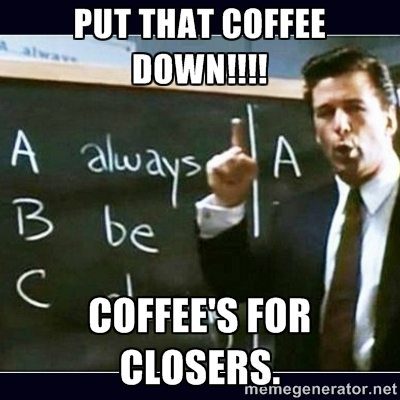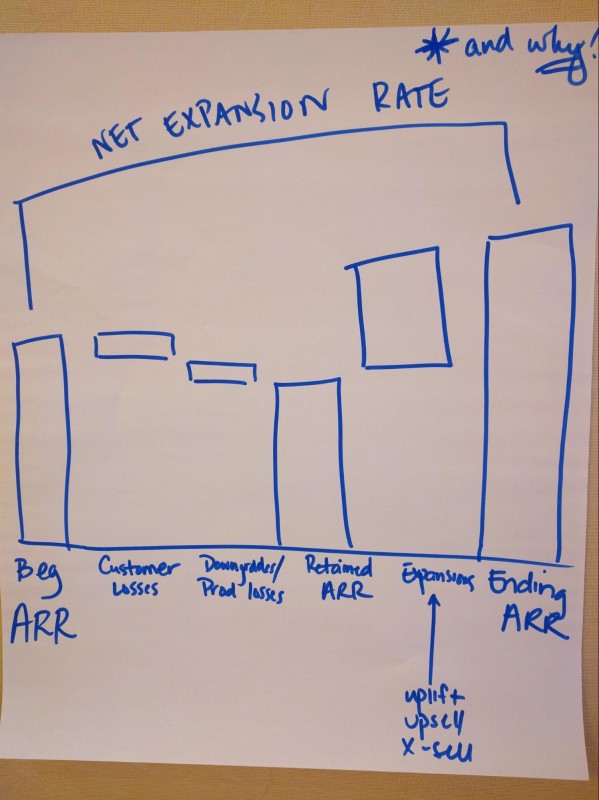This blog is the fourth of five based on anonymized discussions from CCO Summit 2016. Read the third here.
This might be a bit of a morbid post, considering most of you reading are probably CSMs or work closely with them. But have you ever wondered: when should you lose your job?
That was one of the questions posed at CCO Summit 2016, and it’s also one that elicited some fascinating discussion amongst the Customer Success executives in attendance.
And it makes sense why: in the context of Sales, for example, it doesn’t need to be spoken that when you consistently miss your goals, you find new employment. Sales departments have always been clear and open with their expectations. Performance is everything. The risks are high, but so are the rewards. Account Executives earn lucrative commissions, and consistent closers get the coffee, so to speak.

But when it comes to Customer Success, does it make sense to set hard-and-fast retention goals or churn limits, and if a CSM misses them they’re fired? I think I already know what you’re thinking, because many of the Chief Customer Officers and VPs of Customer Success had the same objections you’re probably having. There are way too many factors that contribute to upsell, churn, customer health, NPS, and almost every other commonly-used Customer Success metric. When an AE can’t close, it’s all on his or her shoulders. But when a customer churns, it could be product issues, support issues, onboarding, problems with the sales handoff, factors beyond anyone’s control, or more likely, a combination of all of those at once.
That means a CSM team shares at least some of both the credit and the blame for their numbers with every customer-related department in the company. So I ask again: when do you fire a CSM?
The consensus answer (at least at CCO Summit 2016) wasn’t to fire CSMs when they fell short of key metrics. But if they couldn’t explain why they fell short and how to fix it – that’s when it’s time to start thinking about pink slips. In that case, what are the most important metrics to measure success, and how can you use them to diagnose the causes of failing to meet them?
If you read the previous blog post in this series, you know that being a CSM is all about providing value and delight to the customer – however you can. That can sound infuriatingly vague, but it’s actually very simple to express in concrete figures. If you’re a CSM, you know how much time you spend knee-deep in metrics, statistics, surveys and equations. When it comes to defending your revenue base, you can’t afford to have nebulous benchmarks. Here are just three of the most important metrics to measure your success according to the CS execs at CCO Summit 2016 and why they matter:
- Customer Retention Costs (CRC): This is a big one when it comes to justifying your budget to your CEO and CFO. It’s also a great metric to gauge exactly how much ROI you’re getting on every dollar you spend on Customer Success. At its most basic level, it’s simply the total cost of retaining, renewing, engaging, upselling and cross-selling your customers divided by your Annual Recurring Revenue (ARR). Ideally, this number would be as small a fraction as possible. If it’s greater than one, you have a big problem. Unfortunately, the total cost of retention can get pretty complicated to parse considering how intertwined retention is with every department in your company.
- Net Promoter Score (NPS): NPS, aka “The Ultimate Question” is very well-known in the Customer Success world, and hopefully you’re familiar with it by now. If not, it’s basically a very short survey you send out to your customers asking them how likely they are to recommend your company or product to a friend, colleague or associate. The bottom line is that it works – demonstrably. CCO after CCO at the Summit advocated using NPS as a cornerstone metric. If you’re not using NPS, you need to start. Our Customer Success Evangelist Lincoln Murphy wrote a phenomenal post all about NPS and how to hack the survey to dramatically boost your growth.
- Net Expansion Rate (NER): This was the metric that had many Customer Success Executives furiously scribbling at their notepads. It basically measures how your ARR is growing over a given period of time. Here’s a photo of the equation drawn on a flipchart:

Essentially, you just take the Beginning ARR, subtract customer losses and downgrades to get Retained ARR. Then add expansions through uplift, upsell and cross-sell to calculate your Ending ARR. The delta between Beginning ARR and Ending ARR is your Net Expansion Rate (NER). One of the critical functions of a CSM team is expanding your customer base through uplift, upsell, and cross-sell. It’s just as important as cutting churn. This formula lets you measure how successfully your team is doing just those things. It gives greater insight into your ARR as it relates specifically to Customer Success.
Naturally, there are many more figures you should be looking closely at. We have a very handy Essential Guide to Business Metrics you should check out to learn more about the most fundamental numbers in the Customer Success movement.
Like any emergent field, Customer Success will crystallize over time. Firing practices may never be standardized across the industry, but they will become clearer as the movement becomes more defined. What’s most important is that we stay true to our core values: we’re all about the customer. When it comes to the dirty business of choosing to let people go, that means taking into consideration the relationships each CSM has built over years. That’s obviously not so easy to replace, and needs to be a major factor in the decision. Ultimately, Customer Success benchmarks must continue to become a nuanced blend of the cold, hard numbers and the living, breathing customer relationships the CSM is cultivating.
